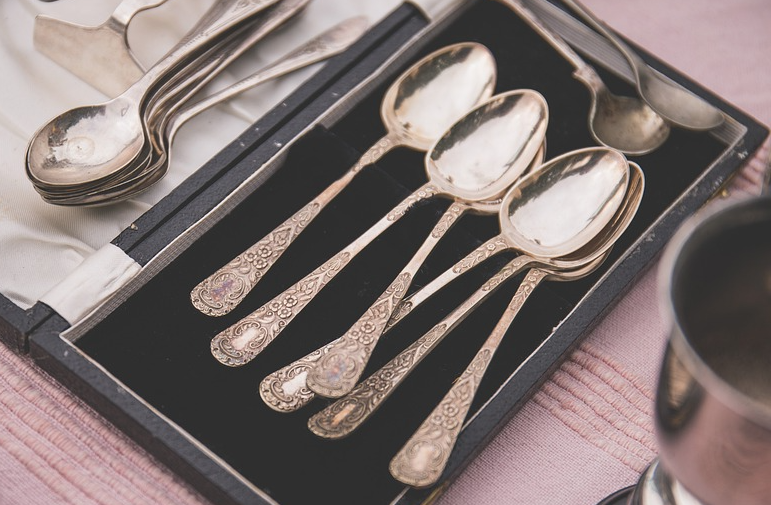Reed and Barton Patterns: Their Value, Marks, and its Origins
When you are setting a fine table, the choice of silverware can make all the difference. A fine tablecloth is elegant. Fine China will allow for a good presentation of food. Fine crystal will show off a sparkling wine. The silverware, however, is what gets handled the most. It is a tool that aids in eating. The shine of silver and beauty of the engraving also adds elegance to the table.
When it comes to utensils, Reed & Barton flatware is among the very best. With an impressive selection and a storied history, the company has evolved over hundreds of years. Vintage Red and Baton silverware is both valuable and beautiful. The unique Reed & Barton silverware patterns are unmistakable. In this article, we will look at value, marks, and origins of Reed & Barton silverware.

A History of Reed & Barton
Reed & Barton began in Taunton, Massachusetts in 1824. The company was called Babbitt & Crossman. The first owner was Isaac Babbitt and he produced Britannia flatware. Failing to make enough of a profit, the company was purchased by Henry Reed and Charles Barton and renamed Reed & Barton. In 1928, there was a merger with silversmith Dominick & Haff. Over the years, Reed & Barton silverware has been used at the White House and the company produced the medals for the 1996 Summer Olympics. Their original Taunton factory is registered as an historic place. They currently have a factory store in Wrentham, Massachusetts and an online store. In 2015, the company declared bankruptcy and was acquired by The Lennox Company.
Reed & Barton Silverware Patterns
Reed & Barton flatware comes in a wide variety of patterns. Among the most popular of the patterns are the two Francis I patterns, which feature scroll work, flowers, lions and eagles. The Burgundy pattern, which features a scalloped pattern, is another popular pattern found on vintage Reed and Barton silverware. Other popular patterns have included fanned French patterns, colonial shell patterns, and a Hammered Antique Glossy pattern. There are also other patterns such as Hampton Court, Rose, French Chippendale, and Spanish Baroque. The elegance and popularity of these patterns is reflected and amplified by similar patterns in other fine silver companies such as Gorham sterling flatware patterns.
Reed & Barton Silver Marks Identification
Some antique silver is valuable because it is historic. That be because it was made by a famous silversmith like Reed & Barton. Silver buyers will want to see proof of your silver’s historic significance. You will need to prove the true provenance of your silver. A silversmith’s mark shows who made the silver. Reed & Barton has used a variety of maker’s marks over the years. Most have featured the name Reed & Barton stamped with globe topped by an eagle above the name.
Interestingly, it is not just the maker’s mark that you will find on vintage Reed and Barton silverware. The company also includes a symbol next to their name to show the year a piece was made. For example, in 1947 they used the scales of justice. In 1956 they used a heart. When you see those symbols, you know that you have genuine vintage Reed and Barton flatware.
Now you have an idea of the history of Reed & Barton and how to determine if your silverware is authentic Reed & Barton flatware, based on the silver marks. If you have some Reed & Barton silverware and you are ready to google “sell silverware for cash near me”, consider contacting the experts at www.goldsilversales.com. Our staff of knowledgeable professionals will help you appraise and sell your Reed & Barton silverware for the best price.
We offer free
evaluations & appraisals.












